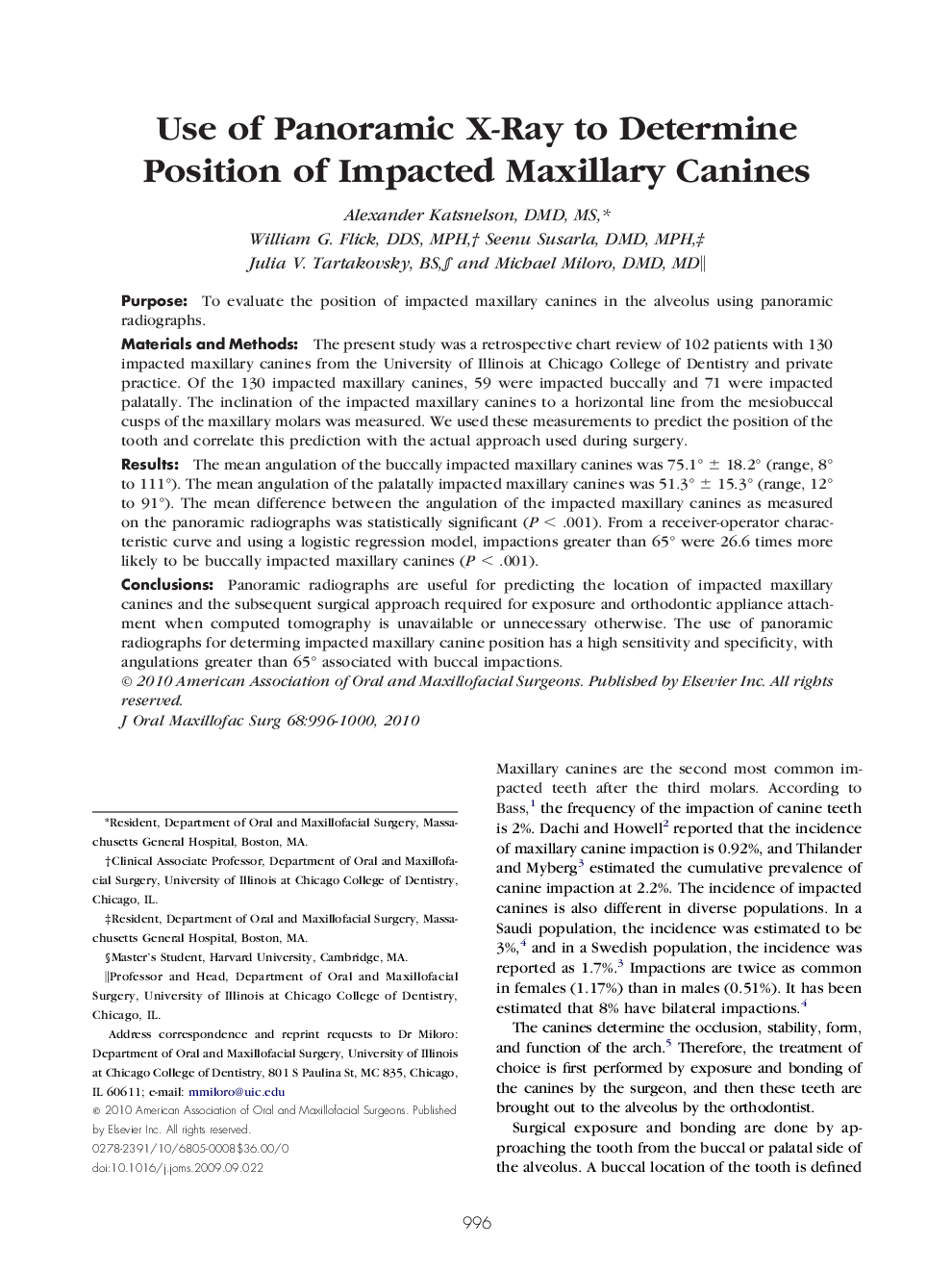| Article ID | Journal | Published Year | Pages | File Type |
|---|---|---|---|---|
| 3154996 | Journal of Oral and Maxillofacial Surgery | 2010 | 5 Pages |
PurposeTo evaluate the position of impacted maxillary canines in the alveolus using panoramic radiographs.Materials and MethodsThe present study was a retrospective chart review of 102 patients with 130 impacted maxillary canines from the University of Illinois at Chicago College of Dentistry and private practice. Of the 130 impacted maxillary canines, 59 were impacted buccally and 71 were impacted palatally. The inclination of the impacted maxillary canines to a horizontal line from the mesiobuccal cusps of the maxillary molars was measured. We used these measurements to predict the position of the tooth and correlate this prediction with the actual approach used during surgery.ResultsThe mean angulation of the buccally impacted maxillary canines was 75.1° ± 18.2° (range, 8° to 111°). The mean angulation of the palatally impacted maxillary canines was 51.3° ± 15.3° (range, 12° to 91°). The mean difference between the angulation of the impacted maxillary canines as measured on the panoramic radiographs was statistically significant (P < .001). From a receiver-operator characteristic curve and using a logistic regression model, impactions greater than 65° were 26.6 times more likely to be buccally impacted maxillary canines (P < .001).ConclusionsPanoramic radiographs are useful for predicting the location of impacted maxillary canines and the subsequent surgical approach required for exposure and orthodontic appliance attachment when computed tomography is unavailable or unnecessary otherwise. The use of panoramic radiographs for determing impacted maxillary canine position has a high sensitivity and specificity, with angulations greater than 65° associated with buccal impactions.
